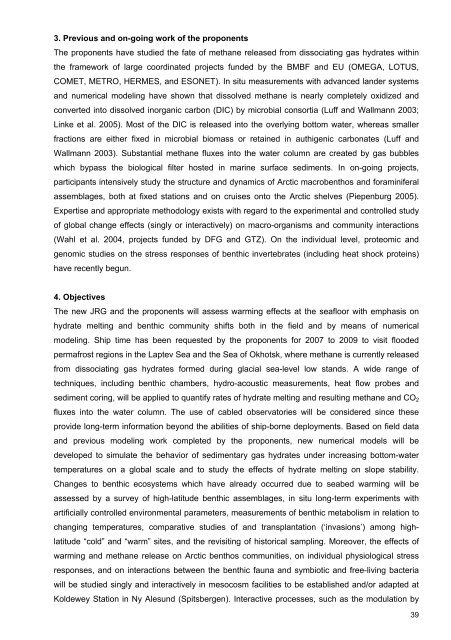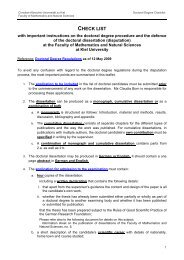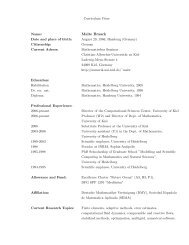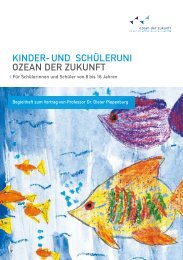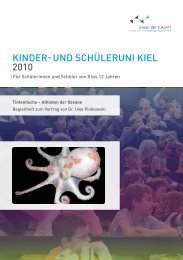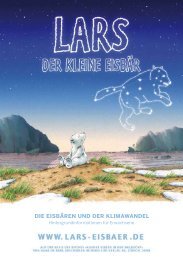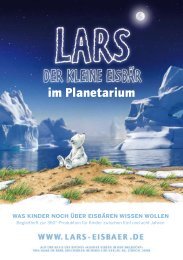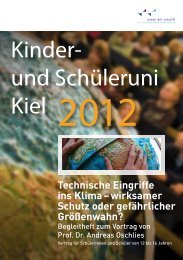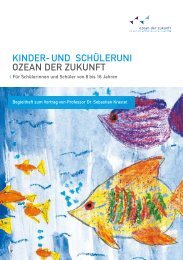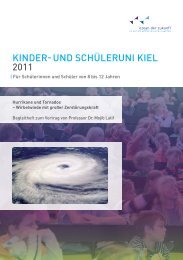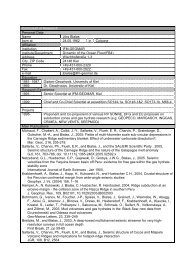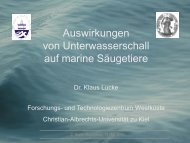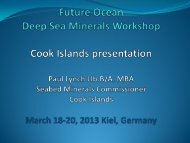Untitled - The Future Ocean
Untitled - The Future Ocean
Untitled - The Future Ocean
- No tags were found...
You also want an ePaper? Increase the reach of your titles
YUMPU automatically turns print PDFs into web optimized ePapers that Google loves.
3. Previous and on-going work of the proponents<strong>The</strong> proponents have studied the fate of methane released from dissociating gas hydrates withinthe framework of large coordinated projects funded by the BMBF and EU (OMEGA, LOTUS,COMET, METRO, HERMES, and ESONET). In situ measurements with advanced lander systemsand numerical modeling have shown that dissolved methane is nearly completely oxidized andconverted into dissolved inorganic carbon (DIC) by microbial consortia (Luff and Wallmann 2003;Linke et al. 2005). Most of the DIC is released into the overlying bottom water, whereas smallerfractions are either fixed in microbial biomass or retained in authigenic carbonates (Luff andWallmann 2003). Substantial methane fluxes into the water column are created by gas bubbleswhich bypass the biological filter hosted in marine surface sediments. In on-going projects,participants intensively study the structure and dynamics of Arctic macrobenthos and foraminiferalassemblages, both at fixed stations and on cruises onto the Arctic shelves (Piepenburg 2005).Expertise and appropriate methodology exists with regard to the experimental and controlled studyof global change effects (singly or interactively) on macro-organisms and community interactions(Wahl et al. 2004, projects funded by DFG and GTZ). On the individual level, proteomic andgenomic studies on the stress responses of benthic invertebrates (including heat shock proteins)have recently begun.4. Objectives<strong>The</strong> new JRG and the proponents will assess warming effects at the seafloor with emphasis onhydrate melting and benthic community shifts both in the field and by means of numericalmodeling. Ship time has been requested by the proponents for 2007 to 2009 to visit floodedpermafrost regions in the Laptev Sea and the Sea of Okhotsk, where methane is currently releasedfrom dissociating gas hydrates formed during glacial sea-level low stands. A wide range oftechniques, including benthic chambers, hydro-acoustic measurements, heat flow probes andsediment coring, will be applied to quantify rates of hydrate melting and resulting methane and CO 2fluxes into the water column. <strong>The</strong> use of cabled observatories will be considered since theseprovide long-term information beyond the abilities of ship-borne deployments. Based on field dataand previous modeling work completed by the proponents, new numerical models will bedeveloped to simulate the behavior of sedimentary gas hydrates under increasing bottom-watertemperatures on a global scale and to study the effects of hydrate melting on slope stability.Changes to benthic ecosystems which have already occurred due to seabed warming will beassessed by a survey of high-latitude benthic assemblages, in situ long-term experiments withartificially controlled environmental parameters, measurements of benthic metabolism in relation tochanging temperatures, comparative studies of and transplantation (‘invasions’) among highlatitude“cold” and “warm” sites, and the revisiting of historical sampling. Moreover, the effects ofwarming and methane release on Arctic benthos communities, on individual physiological stressresponses, and on interactions between the benthic fauna and symbiotic and free-living bacteriawill be studied singly and interactively in mesocosm facilities to be established and/or adapted atKoldewey Station in Ny Alesund (Spitsbergen). Interactive processes, such as the modulation by39


